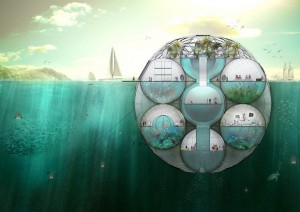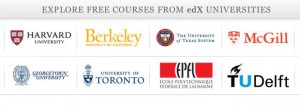![]() Bloom: Photosynthetic pods for mid-ocean living
Bloom: Photosynthetic pods for mid-ocean living
Phytoplankton are microscopic organisms that float around the water surface, harnessing sunlight to make energy for themselves. Like plants, they use chlorophyll to produce oxygen while absorbing carbon dioxide.

So, with impending sea level rises, French architecture firm Sitbon Architectes designed a livable, phytoplankton farm to be installed in the Indian Ocean.
Called the Bloom, the concept behind this large-scale project is “to practice the culture of the phytoplankton to absorb CO2 excesses.”
This 5-level, semi-submersible center will be moored to the seafloor with a system of cables. The part that’s underwater offers housing for resident scientists and aquariums for phytoplankton.
- The structure will be made of aluminum and methacrylate (common in polymer plastics). The total floor area is 2,070 square meters.
- The pod can also monitor water quality and inject phytoplankton into rivers, lakes, and ports to help regulate oxygen levels, accordingly.
- Additionally, since it’s situated in the ocean, the Bloom will be able to alert coastal zones of tsunamis.
Their vision: “every factory would have its own bloom allowing it to absorb the CO2 that it created.”
The project was a finalist in Architizer’s 2013 A+ Awards.
Check out the Sitbon Architectes gallery for more photos and drawings. (Some labels say “diatom,” which is fitting because the Bloom looks glassy, but if you ask me, it looks more like a coccolithophore.)
See Also:


